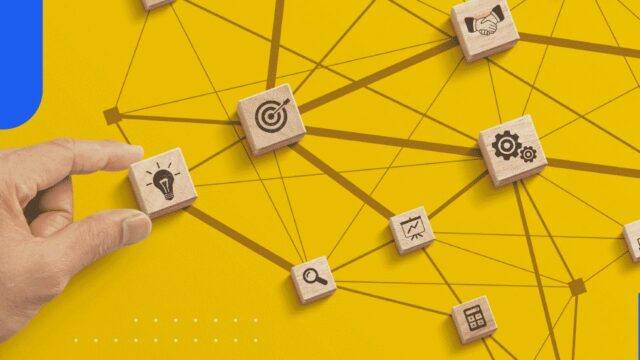
Best Practices for Improving Client Retention
Discover effective strategies for improving client retention.
Retaining clients plays a significant role in the financial health of accounting firms. The higher your client turnover rate, the more your practice needs to spend marketing to and recruiting prospective customers.
In the accounting world, the longer a client stays with your company, the greater the chance they will accept additional services. The more services they pay for, the more opportunities you have to impart your practice’s value while profiting more from their business.
Although firms can improve their client retention record, using certain technology often works more effectively than most methods, as it can help increase collaboration, efficiency and transparency. Not only will this improve the effectiveness of your business processes, but your customers will enjoy better experiences as a result – which will improve your client retention.
Let’s take a look at some examples of this technology – mainly software tools, digital systems and data – and how you can use them to improve client performance.
Embracing collaborative tools
One of the best ways to impress your clients is to provide high-quality services that are completed accurately and promptly. Unfortunately, as your company grows, this becomes more challenging. Teams need to juggle large workloads while making sure different departments do their jobs. This is where collaboration tools come in. Here are three great options to consider:
- Project management systems allow teams to break down complex jobs into a series of tasks, which can then be assigned to different employees with specific deadlines. This way, everyone is on the same page for the project.
- Customer relationship management (CRM) systems allow teams to see what customers need and when it needs to be delivered, so these tasks can be added to project management workflows. Greater client transparency improves collaboration by making their needs more obvious.
- Communication tools can help teams collaborate better through quick conferences and clarifications.
The goal of these systems is to streamline workflows while reducing the probability of mistakes or missed deadlines. When an organization runs effectively, it can better meet the needs of clients and maintain positive relationships.
Enhancing communication channels
There are two types of communication to evaluate within your organization: internal discussions about projects and external conversations with clients. Clear external communication can assure your clients that you are on top of their work and will complete your tasks before the allotted deadlines. Through this channel, clients can provide feedback on ways you can improve the process and their deliverables.
CRM tools can be especially effective for boosting both types of communication. They allow you to send regular updates to clients and can generate notifications when you need to touch base with a client. With this streamlined process, you’ll also have more time for meaningful discussions with clients, which helps ensure they’ll feel heard.
Leveraging data for proactive insights
Some clients might be wary of how their data is used; however, if you can show that data is handled safely and used ethically, you can win people over with a better user experience.
Data platforms use client data to continually improve business processes and mitigate risk. For example, the world of accounting is packed with tight deadlines where finance professionals need to send reports to shareholders and regulators or file taxes. Automated systems can alert clients about upcoming deadlines so they can proactively send information to generate these reports.
These tools can also make the auditing process easier by allowing people to submit relevant information through a secure system.
The right CRM can also help companies upsell clients. They can identify opportunities based on client needs and provide recommendations to customers. This can increase the value the company provides to customers, thus reducing their chances of leaving the financial services provider.
Providing transparent reporting and analytics
Even though there are strict laws regarding transparency and fiduciary responsibility, there are still unethical vendors in the accounting field. Your clients take a risk when hiring you and placing trust in your methods. They need to feel confident that your work is accurate and honest — otherwise, they stand to lose almost everything.
The best way you can build this trust is through transparency. You can send reports that highlight your data collection methods and your reporting processes. You can also send updates on where your company is regarding project completion. These updates make your clients trust your data handling and security.
Consider your current data analytics platforms and how you export information to clients. Evaluate the files you send and the encryption options you have to prove to your clients that you take data management and cybersecurity seriously.
Strengthening data security and privacy measures
Although cybersecurity has been a concern since businesses first turned to digital solutions, breaches are becoming even more common. Nearly 1,000 finance-related companies experienced financial data breaches from 2018 to 2022, which compromised nearly 153 million individual records.
If your company experiences a data breach or an employee falls victim to a phishing scam, all of your client information is at risk.
Consider how you safeguard client data and take steps to comply with current regulations. Then evaluate how you communicate these safeguards to your customers. Any time you take a step to protecting customer data — like switching over to cloud storage — let your clients know. These actions show that you are being proactive in the fight against cybercriminals.
Establishing client feedback channels
Another key way to retain clients is to make them feel heard. Active listening and caring create a sense of emotional and psychological safety while also demonstrating a commitment to client satisfaction.
Too often, executives and customer care teams try to fast-forward through the listening process and move into the solutions part of the discussion. However, some people simply want to feel heard. Tactics like active listening and empathy can go a long way to not only improving client satisfaction but also providing a sense of emotional safety among customers.
In addition, consider how you collect client feedback. If you send out satisfaction surveys, evaluate whether you follow up on comments and ideas. Track how often you put client feedback to use to create a better organization.
Not every client idea is practical or even good, but these ideas can spark discussions within your organization. If you can show that you are listening and applying feedback, your clients will feel valued.
Enabling clients with self-service tools
You can also help your clients by giving them the tools to manage their audit and assurance services themselves. They can check the progress of various projects and submit questions directly to your team. Self-service systems are becoming increasingly popular, since both financial providers and clients want to streamline operations.
These self-service tools can make it easier for clients to work with your organization, which boosts client satisfaction and leads to higher retention rates. They can also reduce the workload on your customer care team because clients can handle basic requests themselves. Your team members will then have more time for more nuanced conversations with clients, which can lay the groundwork for better feedback.








